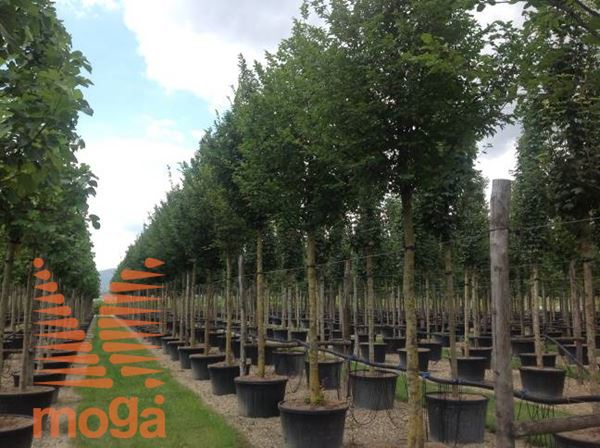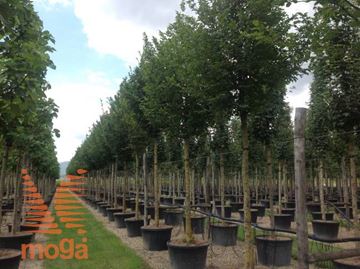Carpinus betulus
navadni gaber
beli gaber
-
Plants from this group grow equally good in different positions, regardless of solar radiation. Usually they need more moisture in sunny than in shady undergorwth and they can bloom more exuberant.
-
This group includes plants particullary used for geometrically shaped, regularly trimmed hedges and are most often used in this way. Such plants are: western red cedar, false cypress, yew, hornbeam, privet etc. Normally they are very tolerant to regular trimming, are easy to grow and nurturing, longlived and tough.
-
Decidious have woody stems (i. e. tree trunk and branches) and are also called woody plants or trees. Leaves are normally broad, soft and thin.
-
The plant develops new leaves or needles every spring, which dropp off in autumn. Herbaceous plants can die completely in above ground section and grow back in the spring.
-
Plant can in otherwise appropriate environment survive cold down to - 23 °C.
-
Porous or dry soils are normally light and loose, there is no stagnant water but relatively quickly flows in deeper layers; such ground are more airy and warmer, yet drier and usually contain less humus and for such undergrowth it is often to for drought to appear (e. g. rockgardens, walls, by paths and roads, on gravel, also on gravel surface in towns and close to buildings ...), plants of such undergrowth need well-drained soil, they tolerate drought but cannot tolerate constant moisture or even flooding.
-
Woody plant, normally with a remarkable tree trunk and a tree top. May have several stems - multistemmed tree. The tree top may be of different shapes, dense or thin, symetric or uneven. Most trees reach a height of more than 3 metres.
- Among described plants in this category we marked those, which are particulary resistant (to various environmental conditions), do not require much maintanance and thereby suitable fot planting in public areas.
- Leaves or needles of many deciduos plants change colour in autumn before falling mostly to yellow, orange and red shades. Distinctive autumn red or similar colouration may also appear in some evergreen plants, which leaves/needels do not fall off in autumn. Autumn coloration depends on general condition of a plant, maintanance, weather and site. Usually leaves colour more intensely if dry autumn and if differences between day and night temperatures are greater, as well as on dry, sandy soils with less nitrogen. Among grown ornamental plants there are numerous varieties with especially intense or diverse autumn colour than by the basic species.

MOGA d.o.o.
Družba za urejanje okolja
Zemljičeva ulica 21
2000 Maribor
Slovenia
Company headquarters and provision of services:
+386 (0)2 4716310
[email protected]
Garden centre
+386 (0)2 4716313
[email protected]






























